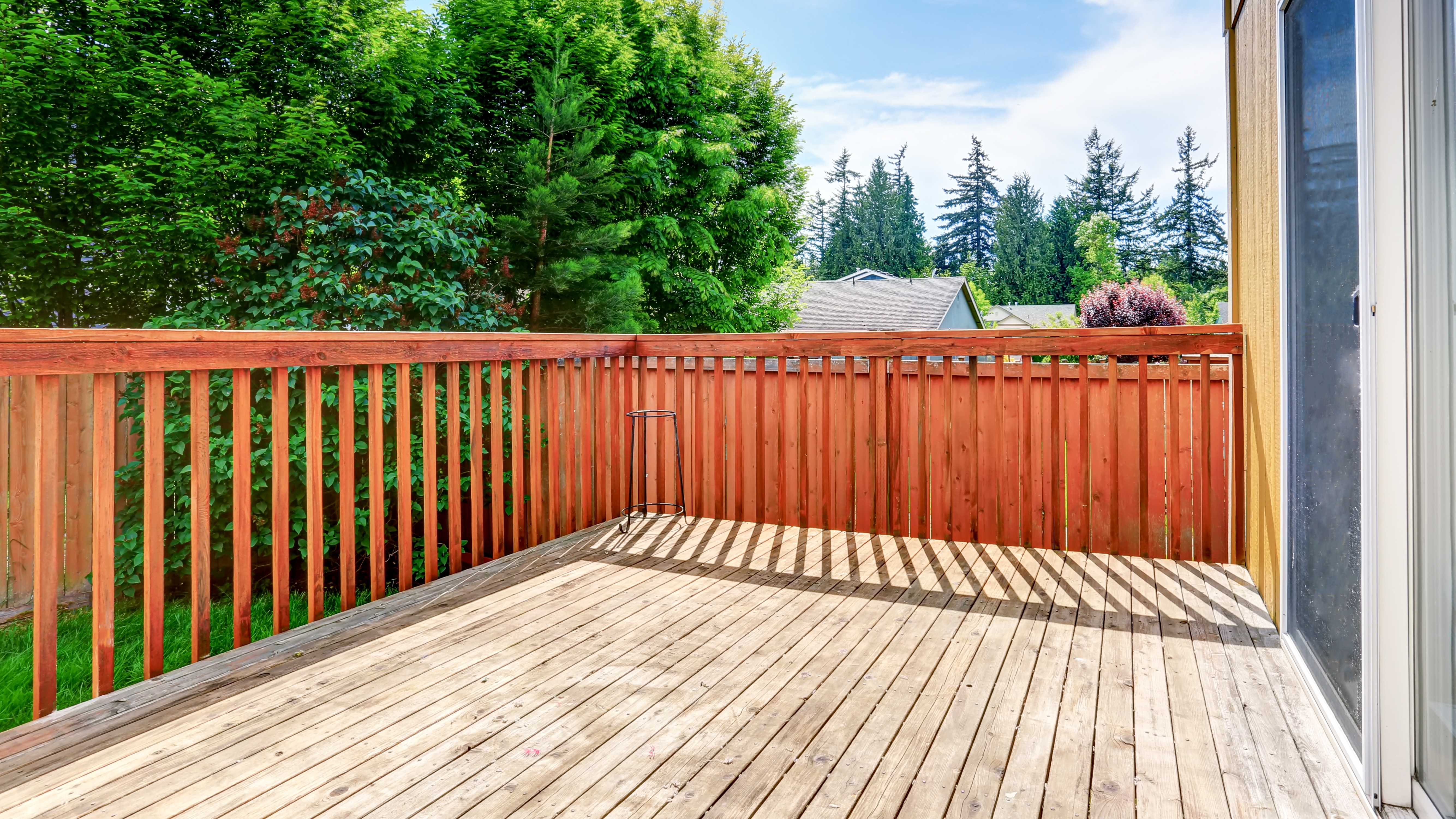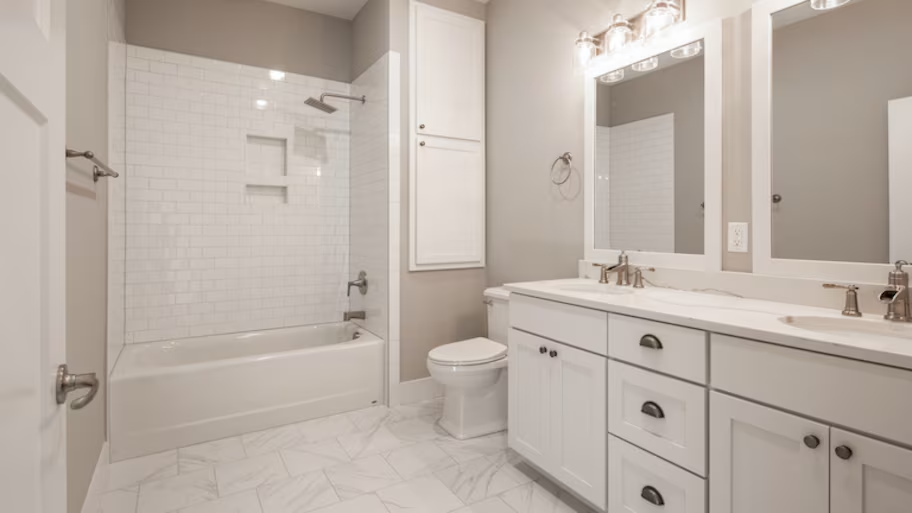
Remodeling your bathroom can add significant value to your home. Your bathroom remodel cost in Columbus, OH will depend on size, fixtures, materials, labor, and other factors.
Mind the gap


Building code dictates that a 4-in. sphere can’t pass between deck and stair spindles.
Exact spindle installation placement will vary based on the width of the material.
Centering your spindle placement requires additional calculations.
Whether you need to replace a few spindles, or balusters, to refinish a railing or replace all of them, you'll need to adhere to the rule stating that a 4-inch sphere can’t pass between balusters. This calculator will help you determine how many spindles you need and their placement.
To meet railing safety requirements for staircases and deck-building codes, precise measurements are necessary. To determine how many spindles you'll need, you must know the precise distance within each section of railing and the width of the thinnest part of your balusters.
The chart below provides the number of spindles you'll need that are 1-inch wide at their thinnest point for various section lengths between posts and walls.
| Section Width in Feet | Number of 1-Inch-Wide Spindles |
|---|---|
| 4 | 9 |
| 6 | 14 |
| 8 | 19 |

To determine the number of spindles you need for a section of railing, measure from the inside of the post or wall that it meets. Then add together how much space you desire between each spindle, keeping in mind that 4 inches is the maximum and the thinnest width of one of your spindles. Now, divide the section length by the sum of the spindle width and spacing value.
You'll likely come up with a fractional number. Round down to the nearest whole number. This is the quantity of spindles you'll need for the section. Repeat for each section and add the total number for all sections to determine the total count. This is useful when determining the cost of replacing an entire railing.
For stair railings, the measurement involves calculating the rise and run as you would when building a staircase or building a stair railing for it. However, if you simply determine and apply your measurements using only horizontal lengths, you can skip the additional math.
Spindle Quantity = Rail Section / (Spindle Width + Spacing Width)
The fraction value above the number of spindles you need represents that the spacing from the end spindle to the end of the section varies from the rest of the spacing. You'll want to center spindle placements within the section for the most attractive results.
The simplest way to measure for centered placement is to determine the center point of the section by dividing the total length by two. Use half of the sum value of one spindle plus the spacing width to determine the on-center location of the spindles nearest the center point.
Determining how many spindles you need is relatively straightforward. However, measuring for precise placement can get a bit tricky. While you can save money on the labor cost of installing a deck railing or stair rail, most homeowners choose to leave it to the pros and hire a deck builder or staircase expert for their needs.
Very professional, polite and helpful. I would recommend him!
Raven and crew does absolutely fantastic job. They are very professional if any concerns were to occur with any of her work she always took responsibility and finished out with a great job. I have worked with her business for a year and have always been satisfied. Very trusted business and...
I had Ace Fireplace Services install custom chimney caps for my home, and the results are stunning. They fit like a glove and have added a touch of sophistication to my chimney. I can't recommend their services enough.
Custom Paint Jobs LLC turned our outdated bathroom into a modern masterpiece.
Very professional and efficient with work. Answered each question I had with great knowledge and an informative response. Will be working with them again.
Window Depot did an amazing job on my deck. I wasnt sure what I wanted to do, but their composite decking was affordable and will last a long time. I am excited to have family over, and I am no longer embarrassed by my backyard. Jeff and the ground crew were polite, respectful, and caring for...
Great tree company, very professional and honest. Glad we found them, they had the best pricing
Maple Tree Service should serve as a mentor for other business! Customer service was superior and beyond expectation. Response to request was prompt. The representative was very courteous and proud of the company. Quote was given during initial visit and work date established. A follow up...
Eugene returned my call within minutes and was able to complete the job within a couple of days. Friendly and professional, and I feel his prices are reasonable.
We used Unique Hardwood Floor LLC three years ago to work on the floors of a 70 year old home that needed a great deal of work. Some floors needed repairs, some were replaced and others just needed to be refinished. It was a complicated job as they needed to blend the old and the new to...
From average costs to expert advice, get all the answers you need to get your job done.

Remodeling your bathroom can add significant value to your home. Your bathroom remodel cost in Columbus, OH will depend on size, fixtures, materials, labor, and other factors.

From budget-friendly builds to advanced plans fit for a gourmet chef, the price to build a kitchen can vary. Learn the average kitchen installation cost.

Curious how much a shower remodel costs? From new fixtures to full installations, we have the prices you need to know to establish a shower remodel budget.

When comparing a steam shower versus a sauna, some factors can impact which one is best for you, including installation, temperature, treatment, and cost.

If your shower door has been acting up, it’s time to get it back in working order. You can adjust a shower door with some common adjustments.

The chances of slipping and falling in the shower increase with age and limited mobility. Here are the types of shower grab bars and safety rails that can keep you safe.